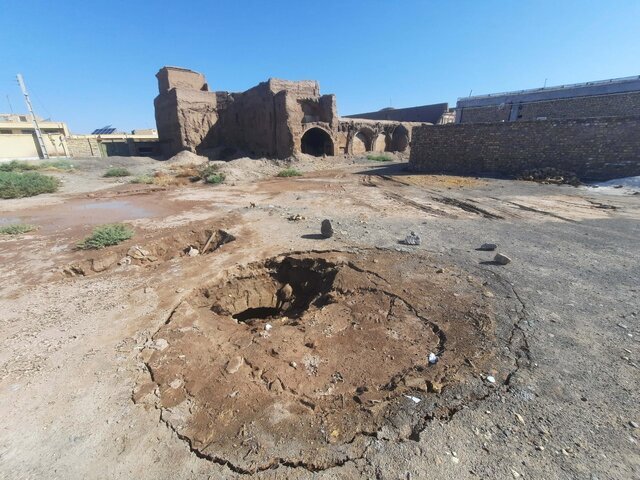Monsoon flood uncovers public bathhouse in southern Iran

TEHRAN—A recent torrential downpour has washed away soil from the top of a subterranean public bathhouse in southern Iran.
“Heavy rains caused the ground to subside and reveal the roof of a large bathhouse in the town of Anar in Kerman province,” ISNA quoted an archaeologist as saying on Monday.
“Constructed some 160 years ago by the order of Mohammad Ismail Khan Nouri (Vaki al-Molk), the ruler of Kerman in the Qajar period, the bathhouse was buried decades ago due to a flood and its exact location was not known,” Mohammadreza Nasababdollahi said.
“Unfortunately, all the historical bathhouses in Anar have been destroyed by human factors in the past periods, and this one is the only remaining historical bath of the town that has been spared from human destruction due to being buried under the soil.”
He expressed hope that the bathhouse to be safeguarded and preserved with the help of the provincial directorate for tourism and cultural heritage.
“I hope Kerman’s General Directorate of Cultural Heritage will put the rescue operation of this 160-year-old bath on the agenda and prevent its destruction,” the archaeologist said.
Public bathhouses in Iran were not the only places for bathing and cleaning up. They had a social concept for people who gathered at these places weekly. It was a place where people talked with each other about their daily life and shared humor and news.
Some bathhouses are still operational, but the majority of them have lost their so-called social function anymore since most people have bathrooms in their homes due to the modern lifestyle.
In the old times, there were separate bathhouses for men and women, usually built next to each other. However, there were some bathhouses, which were used by men and women at different times of the day. There were also male and female public bathhouses; at daybreak, a longhorn (Booq-e javaz) was blown to announce that the bath was ready. Men came to the baths from daybreak till the afternoon. Women could use the bathhouses from then to sunset. In some cases, five days were allocated to the men and two days to women.
Persian literature is full of proverbs, narrations, and folk stories about bathhouses, which indicate the importance of the place in the pastime.
Kerman province is something of a cultural melting pot, blending various regional cultures over time. It is also home to rich tourist spots and historical sites, including bazaars, mosques, caravanserais, and ruins of ancient urban areas. Kerman is bounded by the provinces of Fars in the west, Yazd in the north, South Khorasan in the northeast, Sistan-Baluchestan in the east, and Hormozgan in the south. It includes the southern part of the central Iranian desert, the Dasht-e Lut.
AFM
